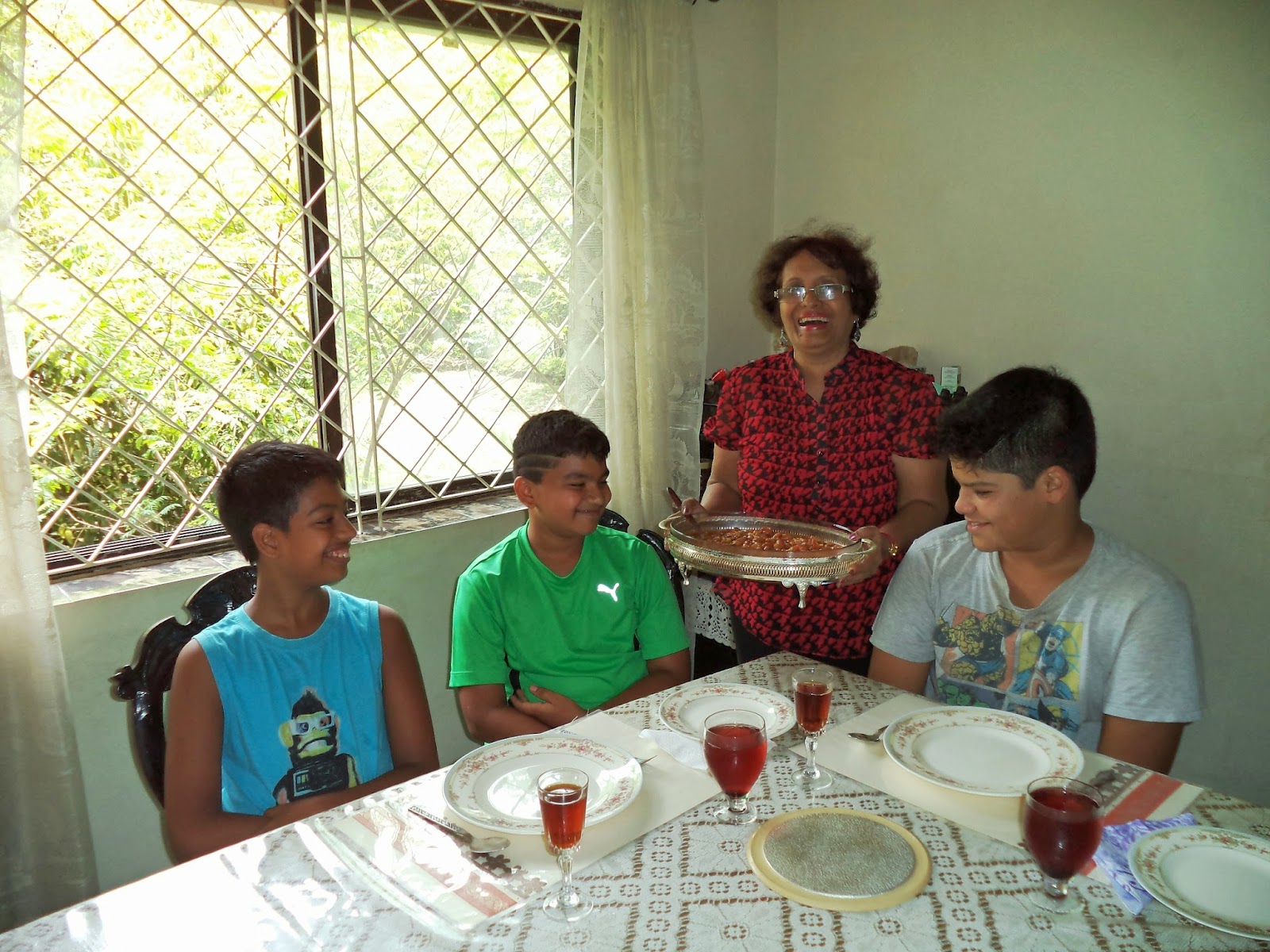There is no ‘stalk’ in this narrative, though this is a dish one would stalk Maria Lena Sequeira’s house for. Neither is there a Jack – the giant slayer, but there was Kynan Sequeira. Ross Alvares and Jugal Shirodkar the myth slayers….but the beans hold true throughout this narrative, although they vary from place to place- this is all about feijado, the name comes from Portuguese(feijao means beans).
Summer holidays and the three boys were frolicking at home on their skateboard just before lunch. I was here to tell them a story….not about Jack the giant slayer (on the bean stalk the movie was showing at a theatre just then), but about a different kind of bean used in a stew. And Maria Lena who was first introduced to the preparation in Brazil had made it for lunch. What did the boys generally like to have for lunch? I wondered. Out of the mouth of babes, their tastes were international (unfortunately not from Portugal or Brazil). Chicken with Pasta says Ross, Lasagna states Keenan, Maggi noodles says the ever practical Jugal whose family runs a food catering chain. I decided to come closer to home…what does Mummy make that you like? I ask. Fish curry Ross and Jugal say in unison. Sausages states Keenan. So have you heard about the Feijado I ask taking this cue. The boys shake their heads.
‘The feijado is served in Brazil and Portugal,’ I began, ‘and also in Goa.’ They look at me politely. Somehow this story is not as exciting as the Maggi noodles jingle. So we all moved to the dining room where Maria Lena’s Feijado stood simmering in the silver plated dish. ‘The typical Brazilian preparation caught my fancy when I visited my sister Lourdes Moniz in Brazil. I had it at the Holiday Inn there and I liked it. They follow the recipe of Emeril Lagasse.’ I look through the recipe; most of the ingredients are available except the black beans, carne seca (salted cured beef) and the hot Brazilian sauce. ‘I substitute Rajmah for the black beans,’ Maria Lena confesses, and in the past I would get salted pork which would be hanging up for sale in a small shop in Panjim. Today I substitute it with bacon; it gives the preparation a nice flavor.’
So what would be the verdict I wondered as I watched the boys spoon the preparation in their mouths? The story through the ages was that this beans preparation was the staple diet of the poor people of Brazil. When the Portuguese gentry finished with their meal, the left over pork trimmings off their plates was mixed with their black beans…a stew of beans called feijoado was created. So what do you all feel? The boys were asked. ‘I like the flavor of the sausage,’ says Ross, ‘it’s tasty,’ says Keenan. Looking at his friends (he does not eat pork) Jugal announces when asked if it will move in his restaurants, “I will tell my father.’
The Brazilians use black beans, they add some vegetables too, in Portugal (northwest mainly Minho and Douro Litoral) white beans are used, while in the north east (Tras os Montes) kidney beans with vegetables like carrots, cabbage and tomatoes are used. Was it difficult to prepare this dish? Maria Lena was asked. In the past it was cooked in a clay pot over a slow fire. She shakes her head. ‘Except for remembering to soak the rajmah overnight,’ she smiles. Tasting our feijado I agree with the boys- this is one preparation one will ‘stew’ for.








